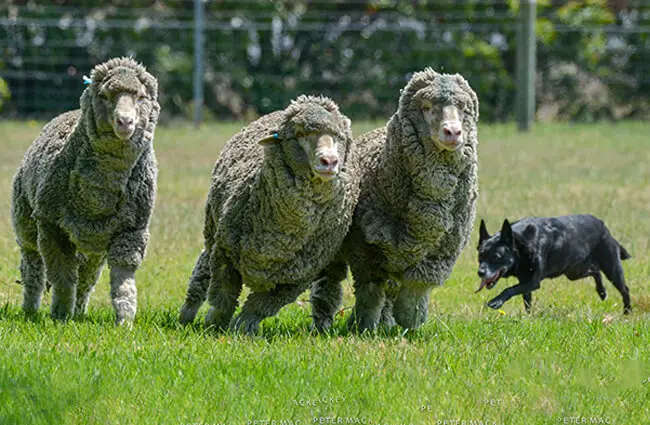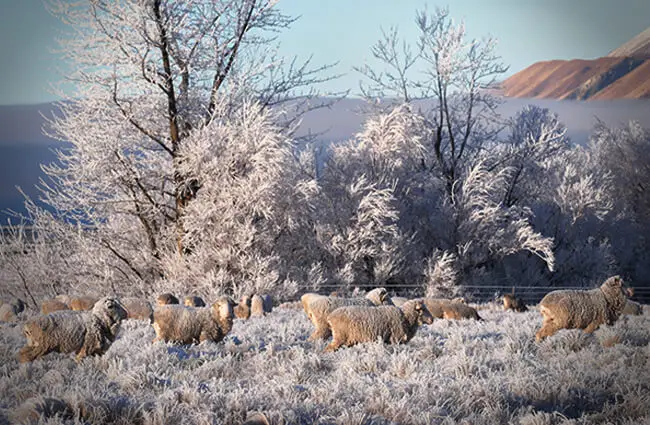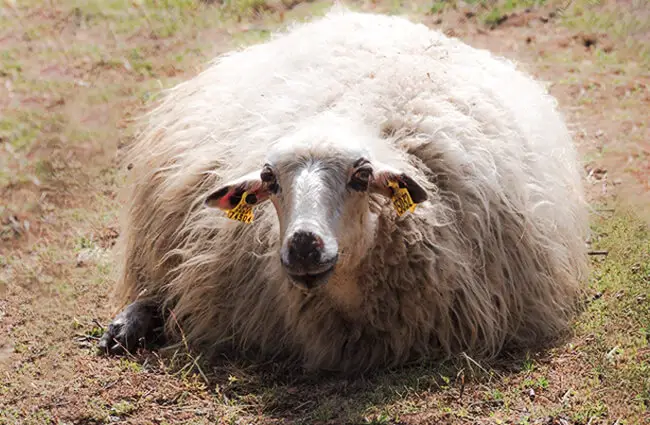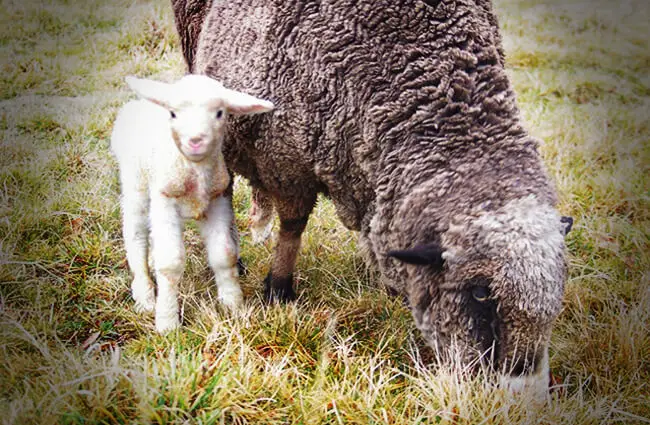The Woolly Wonders of the World: Unraveling the Secrets of Merino Sheep
In the vast tapestry of the animal kingdom, few creatures have woven themselves so deeply into human history and daily life as the Merino sheep. More than just a source of the world’s most coveted wool, these remarkable animals are a testament to adaptation, selective breeding, and a profound connection with the landscapes they inhabit. From their ancient origins to their modern-day impact, the story of the Merino is one of resilience, economic power, and unparalleled natural engineering.
A Glimpse into the Merino World: Basic Facts
What is a Merino Sheep?
At first glance, a Merino sheep might appear to be a fluffy, unassuming creature. However, beneath that iconic fleece lies an animal specifically bred and adapted over centuries to produce the finest, softest wool known to humankind. Merinos are medium-sized sheep, typically weighing between 120 to 200 pounds for rams and 80 to 150 pounds for ewes. Their most distinguishing feature is, of course, their dense, crimped fleece, which can grow quite long if left unshorn, often covering their entire body, including their faces and legs. While most Merinos are white, variations in color can occur, though they are less common in commercial flocks. They are renowned for their hardiness and ability to thrive in diverse environments, making them a cornerstone of agricultural economies worldwide.
![A small flock of Merinos in the sunsetPhoto by: Michael Chaberski [public domain]https://creativecommons.org/licenses/by-nd/2.0/](https://animals.net/wp-content/uploads/2020/03/Merino-6-650x425.jpg)
Where Do Merinos Roam? Habitat and Distribution
The ancestral home of the Merino sheep lies in Spain, where they were meticulously developed for their superior wool quality. For centuries, Spain held a strict monopoly on these valuable animals, prohibiting their export. However, by the late 18th and early 19th centuries, Merinos began their global journey, spreading to various continents. Today, their primary habitats are the vast grazing lands of Australia and New Zealand, which are now the world’s leading producers of Merino wool. Significant populations also exist in South Africa, Argentina, Uruguay, and parts of the United States. These sheep are incredibly adaptable, thriving in environments ranging from arid rangelands to temperate pastures, demonstrating a remarkable ability to cope with both heat and cold thanks to their insulating fleece.
![Merino sheep in the road Photo by: Bernard Spragg. NZ [public domain] https://creativecommons.org/licenses/by-nd/2.0/](https://animals.net/wp-content/uploads/2020/03/Merino-1-650x425.jpg)
The Merino Diet: What Fuels These Woolly Wonders?
As herbivores, Merino sheep are primarily grazers, their diet consisting mainly of grasses, legumes, and various forbs found in pastures and rangelands. They are efficient foragers, capable of utilizing sparse vegetation in challenging environments. Their digestive system is well-suited to breaking down fibrous plant material. Beyond pasture, farmers often supplement their diet with hay, silage, and sometimes grain, especially during periods of drought, lactation, or when additional nutrition is required for wool growth or breeding. Access to fresh, clean water is paramount for their health and productivity, as is the availability of mineral supplements to ensure a balanced nutritional intake.

The Deep Dive: Unraveling Merino Biology and Ecology
An Ancient Lineage: The Evolution of Merino Sheep
The evolutionary history of the Merino sheep is a fascinating tale of human intervention and natural selection. While all domestic sheep descend from wild mouflon, the Merino’s specific lineage traces back to ancient sheep breeds in Spain, possibly influenced by North African stock. Over centuries, Spanish shepherds and breeders meticulously selected for animals producing exceptionally fine, soft wool. This intensive selective breeding program, often shrouded in secrecy, led to the development of the distinct Merino characteristics we see today. The breed’s journey out of Spain, initially through royal gifts and later through more widespread exports, marked a pivotal moment in global agriculture, leading to the development of various Merino strains adapted to different climates and production goals, such as the Peppin Merino in Australia or the Saxon Merino known for its ultra-fine wool.

Life Cycle and Reproduction: The Next Generation of Fine Wool
Merino sheep typically reach sexual maturity around 6 to 10 months of age, though breeding usually commences when they are about 18 months old. The mating season, often referred to as “joining,” is carefully managed by farmers to align lambing with optimal weather conditions and pasture availability, usually in autumn or spring. Ewes have an estrous cycle of approximately 17 days. After successful mating, the gestation period lasts about 147 to 152 days, or roughly five months. Merino ewes generally give birth to a single lamb, though twins are not uncommon, especially in well-managed flocks. Lambs are born relatively small but grow rapidly, relying on their mother’s milk for the first few months. The ewe’s maternal instincts are strong, ensuring the protection and nourishment of her offspring, which are crucial for the survival of the next generation of these valuable animals.

Merinos in the Wild: Ecosystem Role and Interactions
While Merinos are domesticated animals, their extensive grazing in large flocks means they interact significantly with their environments. As grazers, they play a role in shaping vegetation composition, often preferring certain plant species and thereby influencing plant succession. In some semi-arid regions, their grazing can help manage fire risk by reducing fuel loads. However, overgrazing can lead to soil erosion and degradation if not managed sustainably. In terms of interactions with other animals, Merinos are prey animals. In regions like Australia, they face threats from native predators such as dingoes and wedge-tailed eagles, as well as introduced species like foxes. Farmers often employ various strategies, including guardian animals like Maremma sheepdogs, to protect their flocks. Merinos can also host various parasites, leading to interactions with insects and other organisms in their immediate environment, and sometimes even symbiotic relationships with birds that feed on external parasites.

Merinos and Humanity: A Shared History
A Cultural Icon: Merino’s Contribution to Human Society
The Merino sheep’s contribution to human culture is immense, primarily through its unparalleled wool. For centuries, Merino wool has been a symbol of luxury, comfort, and quality. It fueled the textile industries of nations, creating vast wealth and influencing trade routes and political power dynamics. From the fine garments of royalty to the practical, high-performance outdoor wear of today, Merino wool has consistently been at the forefront of textile innovation. Its unique properties, including softness, breathability, temperature regulation, and odor resistance, have made it indispensable in fashion, sportswear, and even military uniforms. The Merino’s economic impact is profound, supporting countless livelihoods in farming, shearing, processing, and manufacturing across the globe. It is not merely a product but a cultural touchstone, representing a legacy of craftsmanship and natural excellence.
![Merino muster in the early morning mist Photo by: Bernard Spragg. NZ [public domain] https://creativecommons.org/licenses/by-nd/2.0/](https://animals.net/wp-content/uploads/2020/03/Merino-2-650x425.jpg)
Living Alongside Merinos: Human Interaction
The relationship between humans and Merino sheep is one of deep interdependence. Merinos are entirely domesticated, relying on human care for their welfare and productivity. Farmers engage in selective breeding to enhance wool quality, quantity, and animal health. Shearing, a vital annual or biannual task, is essential not only for harvesting the valuable fleece but also for the sheep’s comfort and hygiene, preventing overheating and parasite infestations. Beyond wool production, Merinos are also raised for meat in some regions. Human interaction extends to managing their health through vaccinations, parasite control, and veterinary care. The ongoing challenge for human caretakers is to balance the economic demands of wool production with the ethical considerations of animal welfare, leading to continuous improvements in husbandry practices and a growing focus on sustainable and humane farming.
Practical Insights: Encountering and Caring for Merinos
Finding Merinos in Their Natural (or Semi-Natural) Habitat
For an animal lover hoping to find Merino sheep in the “wild,” it is important to understand that these are domesticated animals. They are not found roaming untouched wilderness like truly wild species. Instead, they are typically found on farms, ranches, and extensive grazing properties in countries known for their wool production, such as Australia, New Zealand, South Africa, and parts of the Americas. To observe them, one would need to visit agricultural regions where sheep farming is prevalent. Always respect private property, and if you wish to view sheep on a farm, seek permission from the landowner. Observing them from a distance in their managed pastures is the best way to appreciate their natural grazing behaviors without causing disturbance.
A Hiker’s Guide: What to Do if You Encounter Merino Sheep
Encountering Merino sheep while hiking, especially in areas with open grazing, is a common experience. These animals are generally docile, but it is crucial to remember they are livestock and should be treated with respect and caution.
- Keep Your Distance: Do not approach, chase, or attempt to pet the sheep. They are not pets and can become stressed or defensive if they feel threatened.
- Stay Calm and Quiet: Sudden movements or loud noises can startle them.
- Do Not Feed Them: Feeding livestock can disrupt their diet, lead to health problems, and encourage them to approach humans, which can be dangerous for both the sheep and future hikers.
- Control Your Dog: If you are hiking with a dog, keep it on a leash at all times. Even well-behaved dogs can instinctively chase sheep, causing immense stress or injury to the flock.
- Observe from Afar: Enjoy the sight of these beautiful animals from a respectful distance.
- Report Concerns: If you notice a sheep that appears injured, distressed, or entangled, report it to the nearest landowner or local animal welfare authorities.
Caring for Merinos in Captivity: A Zookeeper’s Handbook
Caring for Merino sheep, whether in a zoo setting or on a farm, requires specific knowledge and consistent attention to their unique needs.
- Diet and Nutrition:
- Provide a consistent supply of high-quality forage, such as fresh pasture, hay, or silage.
- Supplement with appropriate sheep pellets or grains during periods of high demand (e.g., pregnancy, lactation, or poor pasture quality), ensuring not to overfeed concentrates.
- Offer mineral licks or supplements to prevent deficiencies.
- Ensure constant access to fresh, clean water.
- Habitat and Environment:
- Provide clean, dry shelter to protect them from extreme weather conditions (rain, strong sun, wind).
- Ensure ample grazing space to prevent overgrazing and allow for natural behaviors.
- Maintain secure fencing to prevent escape and protect from predators.
- Keep the enclosure clean to minimize parasite load and disease.
- Health Monitoring and Veterinary Care:
- Perform daily health checks for signs of illness, injury, or distress (e.g., lameness, lethargy, changes in appetite, nasal discharge).
- Implement a regular parasite control program, including fecal testing and appropriate drenching.
- Schedule routine hoof trimming to prevent lameness and maintain hoof health.
- Follow a vaccination schedule recommended by a veterinarian.
- Be vigilant for conditions specific to sheep, such as flystrike, especially in warmer months.
- Wool Management:
- Annual shearing is crucial for Merino sheep welfare. It prevents overheating, reduces the risk of flystrike, and allows for inspection of the skin.
- Ensure shearing is performed by experienced shearers to minimize stress and injury.
- Social Needs:
- Merinos are flock animals and thrive in groups. Never house a single Merino in isolation.
- Observe flock dynamics to ensure all individuals are integrating well.
- Things to Avoid:
- Neglecting regular hoof care, which can lead to severe lameness.
- Ignoring early signs of illness or distress, as sheep can decline rapidly.
- Overfeeding high-energy concentrates, which can cause digestive issues like acidosis.
- Allowing their fleece to become excessively long and matted, leading to welfare issues.
- Introducing new animals without proper quarantine procedures.
- Using medications or treatments without veterinary guidance.
Fascinating Facts About Merino Sheep
- The World’s Finest Wool: Merino wool fibers are incredibly fine, typically measuring less than 24 microns in diameter, with some ultra-fine varieties going below 15 microns. This makes them significantly finer than human hair.
- Natural Thermoregulators: Merino wool is renowned for its ability to regulate body temperature, keeping sheep warm in cold conditions and cool in hot ones. This property translates to excellent performance in human apparel.
- Historical Wealth: For centuries, Merino sheep were considered a national treasure in Spain, and their export was punishable by death, highlighting their immense economic and political value.
- Diverse Strains: There are several distinct strains of Merino sheep, each bred for specific characteristics, such as the Peppin Merino (known for hardiness and medium-fine wool) and the Saxon Merino (prized for its ultra-fine wool).
- Odor and UV Resistance: Merino wool naturally resists odor-causing bacteria and offers natural UV protection, making it ideal for activewear and outdoor clothing.
- Fire Retardant: Unlike synthetic fibers, Merino wool is naturally fire-resistant and self-extinguishing, adding to its safety profile.
- Mulesing Controversy: A specific surgical procedure called mulesing, performed on some Merino lambs to prevent flystrike, has been a subject of animal welfare debate, leading to the development of alternative practices and a push for mulesing-free wool.
- Long Staple Length: Despite its fineness, Merino wool typically has a good staple length, making it strong and durable for spinning into yarn.
The Enduring Legacy of the Merino
From the sun-drenched plains of Spain to the vast sheep stations of Australia, the Merino sheep stands as a testament to the power of selective breeding and the enduring partnership between humans and the animal kingdom. These woolly wonders are far more than just producers of luxurious fiber; they are resilient survivors, ecological influencers, and a living bridge to centuries of human ingenuity and cultural development. Understanding the Merino means appreciating a creature that has shaped economies, clothed nations, and continues to inspire innovation in textiles and sustainable agriculture. Their story is a reminder of the intricate connections that bind us to the natural world and the remarkable animals within it.

![Red Angus Closeup of a beautiful Red Angus cowPhoto by: U.S. Department of Agriculture [pubic domain]https://creativecommons.org/licenses/by/2.0/](https://animals.net/wp-content/uploads/2020/03/Red-Angus-4-238x178.jpg)




![Red Angus Closeup of a beautiful Red Angus cowPhoto by: U.S. Department of Agriculture [pubic domain]https://creativecommons.org/licenses/by/2.0/](https://animals.net/wp-content/uploads/2020/03/Red-Angus-4-100x75.jpg)

